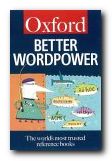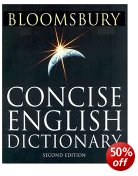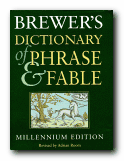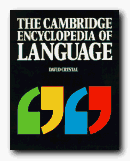free pages from our English Language software program
Apostrophes – definition
![]() Apostrophes are shown by a raised comma — like this ( ‘ ).
Apostrophes are shown by a raised comma — like this ( ‘ ).
![]() Apostrophes are used to show possession and to punctuate contractions.
Apostrophes are used to show possession and to punctuate contractions.
Examples
Possession– My mother’s house – The girl’s bicycle
The house belongs to my mother – The bicycle belongs to the girl
Contractions– There’s nobody here – Where’s Freddy?
There is nobody here – Where is Freddy?
Use
![]() We can write The tail of the dog or The dog’s tail. This is possession – when something belongs to someone or something.
We can write The tail of the dog or The dog’s tail. This is possession – when something belongs to someone or something.
![]() We can also write It is a lovely day or It’s a lovely day. This is contraction – when two words are merged. The apostrophe is used to denote the missing letter.
We can also write It is a lovely day or It’s a lovely day. This is contraction – when two words are merged. The apostrophe is used to denote the missing letter.
![]() NB! Many people have problems with the apostrophe. [You’re not alone.] Read on!
NB! Many people have problems with the apostrophe. [You’re not alone.] Read on!
Possession
![]() When the possessor is single we indicate possession by using an apostrophe followed by the letter s:
When the possessor is single we indicate possession by using an apostrophe followed by the letter s:
The man’s coat
my sister’s hat
![]() When the possessors are plural, the apostrophe is placed after the final s:
When the possessors are plural, the apostrophe is placed after the final s:
The girls’ bicycles
my cousins’ parents
![]() When names end with the letter ‘s’, either use is acceptable:
When names end with the letter ‘s’, either use is acceptable:
James’ wife or
James’s wife
![]() [It is often said that the choice between the two should be made on how the word is pronounced.]
[It is often said that the choice between the two should be made on how the word is pronounced.]
![]() The apostrophe is never used with possessive pronouns:
The apostrophe is never used with possessive pronouns:
his – hers – its – ours – yours – theirs
![]() But it is used with one: One must do one’s best.
But it is used with one: One must do one’s best.
![]() Note that the apostrophe is not required where a word has been formed by omitting its first part:
Note that the apostrophe is not required where a word has been formed by omitting its first part:
bus – not – ‘bus [from omnibus]
phone – not – ‘phone [from telephone]
![]() No apostrophe is required in the plural form of numbers and dates:
No apostrophe is required in the plural form of numbers and dates:
in the 1920s
the roaring twenties
Contractions
![]() In formal writing we would write She has always loved him, but when speaking we would probably say She’s always loved him. The apostrophe is used to indicate the missing letters (or sounds).
In formal writing we would write She has always loved him, but when speaking we would probably say She’s always loved him. The apostrophe is used to indicate the missing letters (or sounds).
I’m (I am) He’s (He is) You’re (You are)
![]() Notice the difference between it’s (it is) and its (belonging to it).
Notice the difference between it’s (it is) and its (belonging to it).
![]() NB! There is no such thing as its’
NB! There is no such thing as its’
![]() The use of contractions tends to make writing less formal.
The use of contractions tends to make writing less formal.
![]() It is just possible that the apostrophe will be the next linguistic feature to disappear from common use.
It is just possible that the apostrophe will be the next linguistic feature to disappear from common use.
![]() It causes lots of problems, and in most cases the context would make the meaning clear even if it were missing.
It causes lots of problems, and in most cases the context would make the meaning clear even if it were missing.
![]() It is in fact a relic from the days when English was an inflected language. This may be a reason for the problems, and it would form some justification for its disappearance.
It is in fact a relic from the days when English was an inflected language. This may be a reason for the problems, and it would form some justification for its disappearance.
Self-assessment quiz follows >>>
© Roy Johnson 2003
English Language 3.0 program
Books on language
More on grammar



